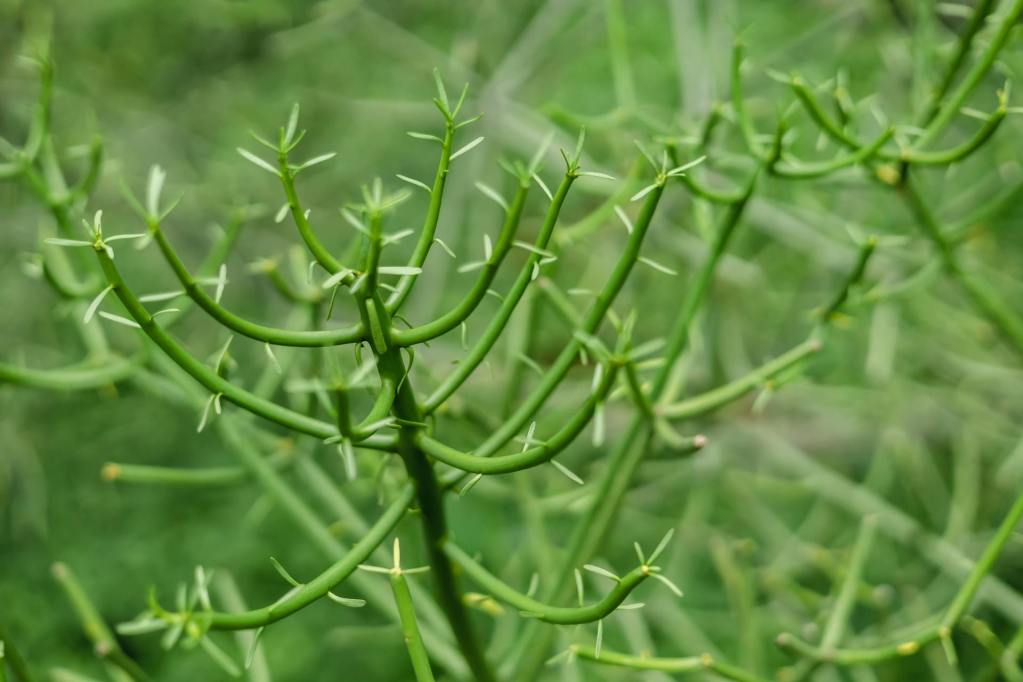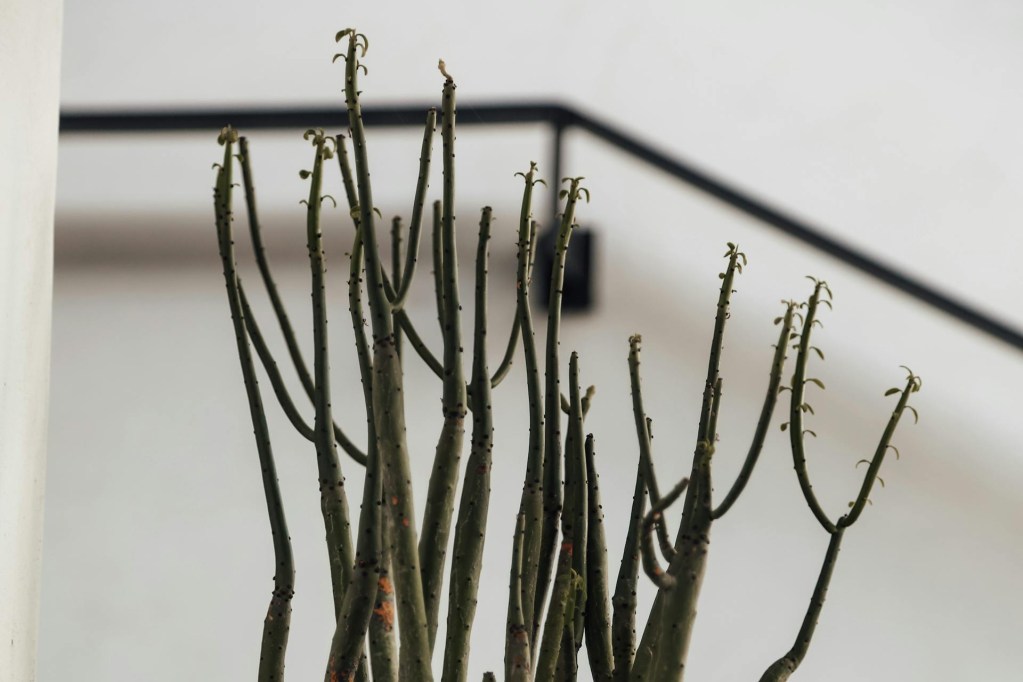If you’ve been looking for a unique and interesting cactus, you might have heard about the pencil cactus plant. Named for their thin, pencil-like branches, these plants are fun to grow. Although these delightful plants resemble cacti, they actually aren’t. Curious about what they are and how you can grow your own? From how these plants are classified to how often you should water them, we have the answers. This guide to pencil cactus plant care will explain everything you need to know to grow your own.
What is a pencil cactus plant?

If a pencil cactus isn’t a cactus, then what is it? Euphorbia tirucalli, more commonly called the pencil cactus, is actually a succulent. It is also sometimes called a tree, growing up to 6 feet tall indoors and 30 feet when grown outdoors. Plants in the Euphorbia genus are often referred to as cacti, with some of the more common ones being the pencil cactus, the cathedral cactus, and the crown of thorns cactus. However, they are, in fact, all succulents.
While there is some overlap between cacti and succulents, there are a few distinguishing features. First, cacti have needles, also sometimes called spines, which are thin and can sometimes detach from the cactus to stay lodged in the animal, person, or object that brushed against the cactus. Succulents do not always have sharp bits, but the ones that do have thorns, not spines. Thorns have a wider base and are more difficult to dislodge from the plant.
The other difference is in the shape. Cacti do not have leaves and instead store extra water inside their dense stems. Succulents do have leaves, and extra water can be stored in the leaves or in the stems. Pencil cactus plants may not look like it, but they actually do have leaves. The leaves are quite small, making them easy to miss.
Planting pencil cactus plants

Like most succulents, pencil cactus plants need well-draining soil, and they do well in sandy or rocky soil. As they are sensitive to overwatering, avoid containers that don’t have drainage holes for water to pass through. A succulent or cactus soil mix is a great choice for your pencil cactus, but any well-draining soil will work.
Place your pencil cactus in full sun. While some light shade is tolerable, these succulents will not thrive without plenty of sunlight. Direct sun or bright, indirect sun (or a combination of both) is ideal for pencil cactus plants. If you don’t have a suitable location for your plant, you can supplement the natural light with a grow light. This is particularly useful during winter.
During warm weather (above 50 degrees Fahrenheit at least, and ideally above 65 degrees Fahrenheit), your pencil cactus can be outside. If you live in USDA hardiness zones 10 to 12, you can grow a pencil cactus outdoors year-round. Otherwise, your pencil cactus should be indoors and kept away from drafts. Additionally, keep it out of reach of pets or children, as the sap is an irritant that can cause inflammation in any skin it comes in contact with, including internally!
Pencil cactus care

You should water your pencil cactus when the soil is completely dry. If the soil is still damp, even if it is only damp at the bottom, wait for it to dry out before watering it. Typically, this means watering your pencil cactus every week and a half to two weeks, although it could be more or less frequent depending on the temperature and humidity in your home. Avoid getting the plant wet when watering it. During winter, water your pencil cactus less frequently. A thorough watering every three to four weeks is enough during this period, as the plant will mostly be dormant.
During spring and summer, your pencil cactus will appreciate a light feeding. They are not heavy feeders, so avoid heavy doses of fertilizer. Instead, opt for a diluted liquid fertilizer made for succulents. Avoid fertilizing your pencil cactus during fall and winter.
Your pencil cactus will need to be repotted every couple of years. Plan to repot it every two years, but check the roots at the beginning of each growing season to monitor them. If the roots begin to look crowded or begin growing out of the drainage holes, then it is time to repot your pencil cactus. Pencil cactus plants are called trees for a reason — you can expect this plant to grow fairly large during its lifetime. Keep this in mind when repotting it. You can prune your pencil cactus in spring to help control its size and shape if you prefer; just be careful to avoid skin contact with the sap.
Pencil cactus plants are delightful succulents perfect for any sunny room in your home. With proper care, these plants make an excellent statement piece and are quite interesting to look at. Just be careful when pruning them and keep them away from pets or children who might try to eat or play with them!




